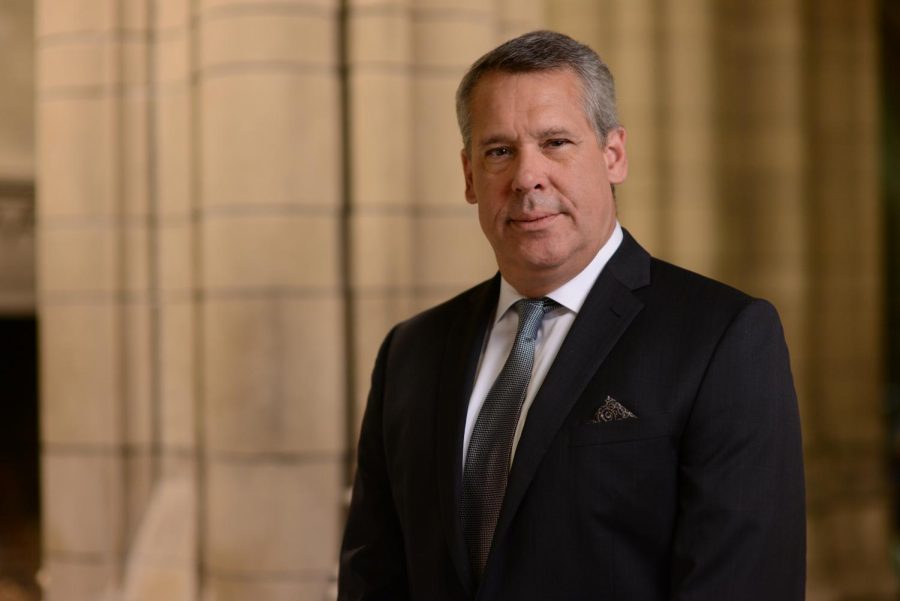COVID-19 creates financial strain on OSU Athletics
May 15, 2020
It is safe to say the recent global outbreak of the coronavirus pandemic has affected all of our lives immensely. Whether it be losing a job, cancelling a trip, or having remote gatherings, we have all had to adjust.
This is the case for the Oregon State Athletic Department as their spring is looking very different than normal. There will be no sporting events for the foreseeable future, which means money within the program must be looked at in a unique way.
The department has had to figure how to deal with the lost revenue that would have come if spring sports were allowed to continue, how they will choose to handle scholarships in the near future and how they must recruit at the time given the circumstances. Oregon State vice president and director of athletics Scott Barnes offered insight into this unpredictable interruption.
“Because we pay the university for athletic scholarships, the tuition freeze mitigates some of the increased cost of scholarships that we were expecting for next year,” Barnes said via email. “Scholarships will be budgeted in accordance to the 2019-2020 academic year. Additionally, athletics is taking a 10 percent decrease in the spring student fees. We will make up this 10 percent internally with budgetary reallocation measures.”
Scholarship and recruitment numbers will continue to change as senior spring sport athletes decide whether they want to play next season after the NCAA granted another year of eligibility to these athletes. On top of this, there is uncertainty about how the football season will look going into the fall. To combat these concerns, OSU vice president of university relations Steve Clark highlighted efforts the university is making to try to compensate for the lost dollars from this spring and summer.
“OSU [Athletic’s] first priority is it’s student-athletes,” Clark said via email. “Due to the pandemic, the OSU’s athletic department is reviewing varying financial scenarios that include significant budget cuts. Scholarships are not part of reductions being considered, with the exception of some reduced assistance for summer term this year.”
Clark also said the department is working to explore options for more financial stability to support student-athletes.
“OSU Athletics is actually raising $400,000 dollars in philanthropy to cover the cost of recent NCAA legislation that will permit seniors, who were not able to participate in spring sports this season due to the pandemic, to return on scholarship for an extended year of eligibility,” Clark said.
The Athletic department has had more than money to deal with recently as they have had to adapt to new ways of connecting with their athletes who are now spread out across the country. The department understands the importance of staying in touch with athletes regarding career paths for life after sports, their workout plans and how they are adjusting to remote schooling. Oregon State senior associate athletic director Kimya Massey is leading webinars and thinking of other ideas to keep student-athletes busy and connected during quarantine.
“We are doing remote/zoom 1-on-1 meetings with student-athletes to work with them on their resumes and LinkedIn profiles,” Massey said via email. “We are also connecting them with alums who are in the industry to create mentoring relationships that will help them find internships and jobs down the road upon graduation. We are doing leadership development workshops to help team leaders understand the various dynamics around leadership and how to communicate effectively and in timely ways.”
Massey also explained topics the webinars are covering, including student-athlete identity, personal development, financial literacy and preparation for graduate school
“It’s an opportunity to connect with other athletes from all teams and find common ground during a difficult time,” Massey said. “Our Thursday webinar is with former student-athletes who work at various companies who are sharing their time to give great lessons and feedback on how to get hired, what companies look for, how to develop your brand, how to apply applicable skills learned while being an athlete. We have heard from Nike, the Portland Trailblazers, and E&J Gallo.”
This time has been pressing for many but these outlets provided by Athletics have allowed Beaver student-athletes to further their academic profiles and strengthen their professional portfolio. Massey summed up the department’s responses and their support of the student-athletes in an unprecedented time.
“I would say limited resources have forced everyone on campus, including athletics, to be more resourceful in how we communicate with students,” Massey said. “We have had to be more creative in how we communicate with them and also it creates a stronger dialogue to understand what students need.”
Massey also recognized the resilience in the athletes in this time.
“I feel that more student-athletes are becoming leaders in this new environment because they are willing and able to share opinions and are leading their fellow students in different exercises and in helping them understand what they need to get through tough times,: Massey said. “So, I don’t think it’s necessarily been a burden, especially since many of them are back home with family.”










































































































